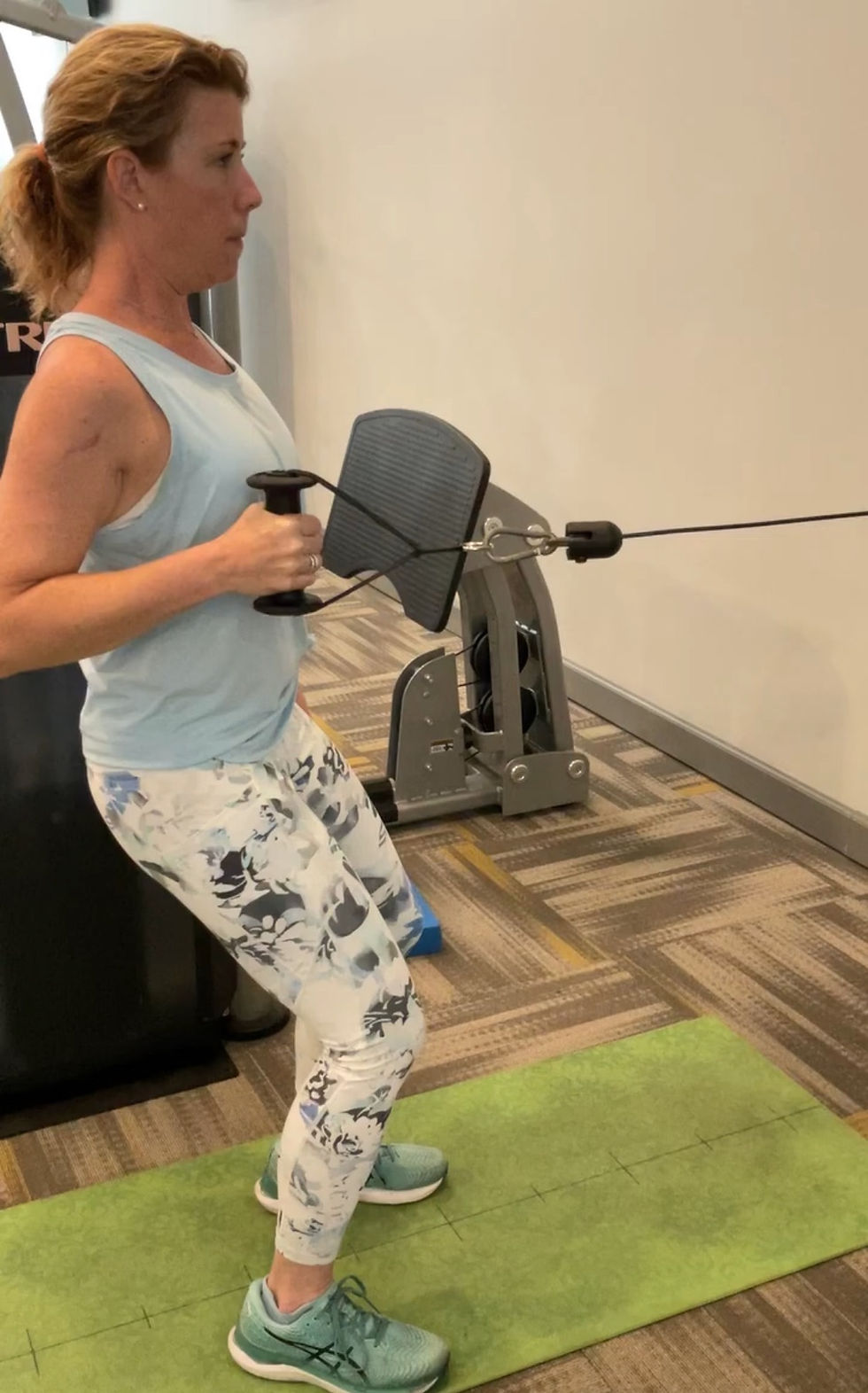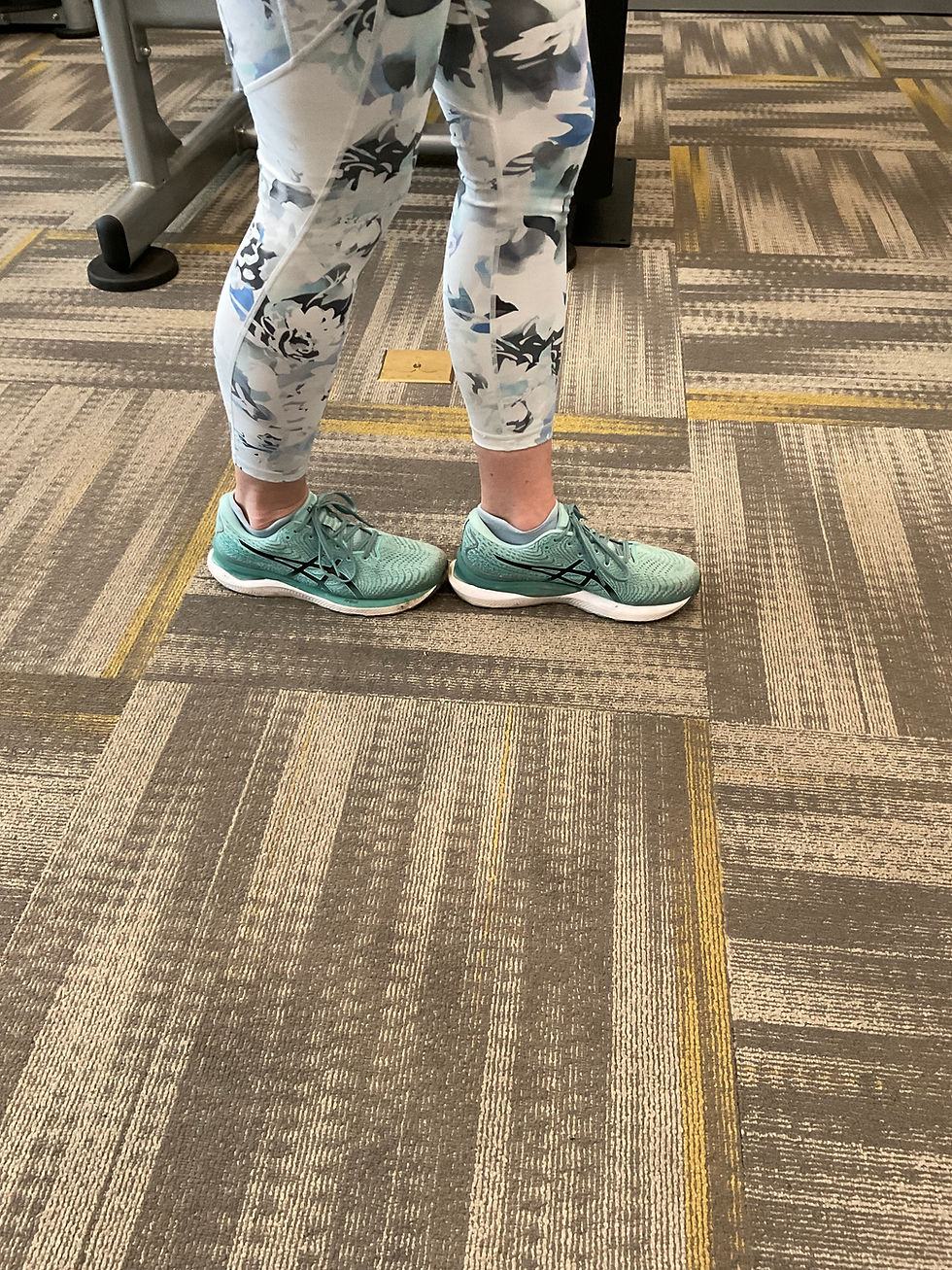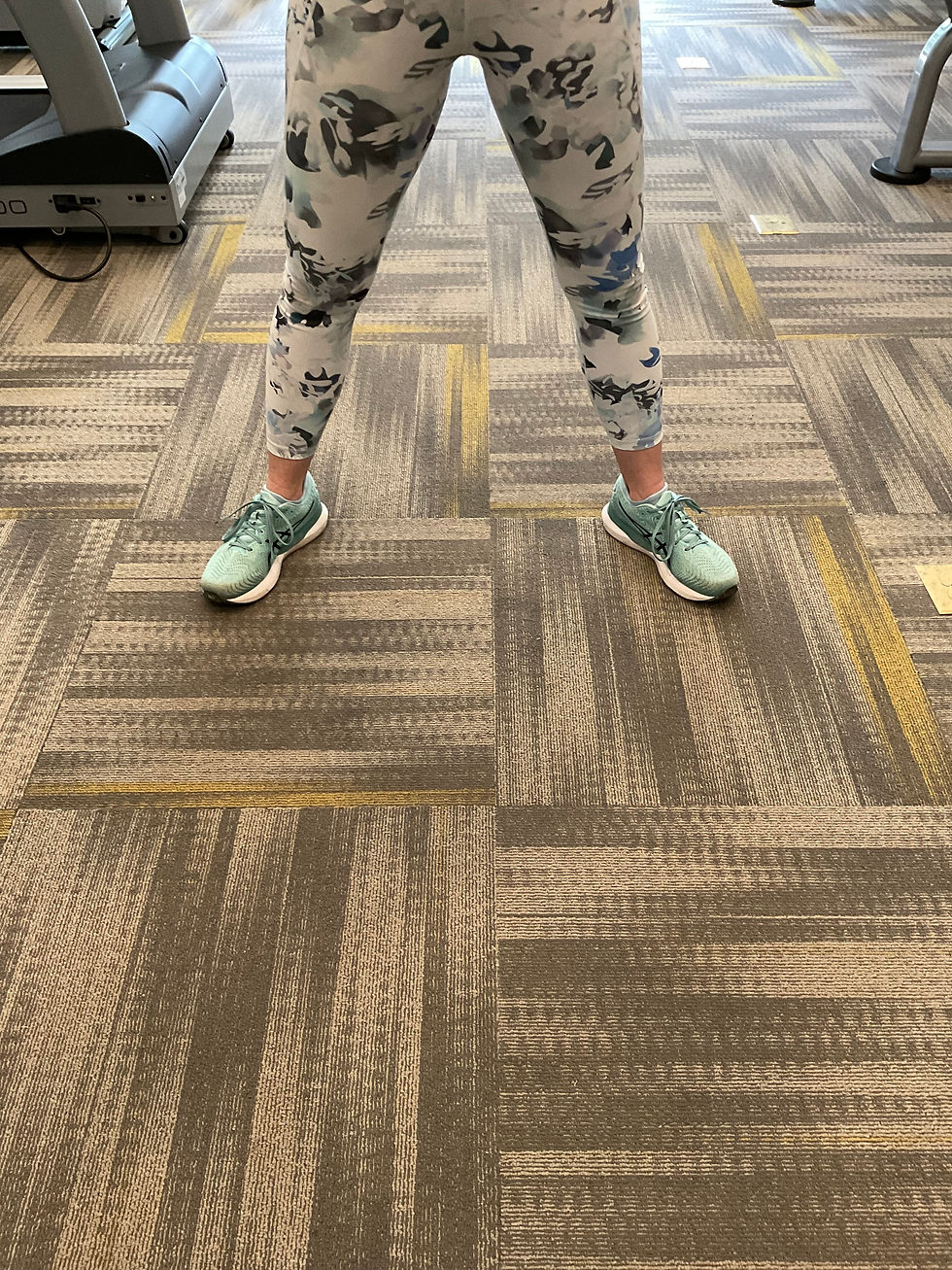5 Ways To Incorporate Advanced Balance Techniques Into Your Fitness Routine
- Joe Pennio

- Oct 24, 2022
- 4 min read
Updated: Nov 4, 2022
Most of us don’t think twice about balance. We just “do” balance and only when we start aging or having problems do we realize this is typically an automatic process. But it's important to realize that balancing is a skill to maintain and improve at any age.
If you’re an athlete you might be depending on balance abilities to prevent falls during a game - like soccer or pickle ball, you might be a weekend hiker that doesn't want to trip and get hurt in the woods, or maybe you've gotten a little older and start to worry about staying steady on a ladder to put up holiday decorations.
Being proficient in your ability to balance will improve your performance in playing the sports you love, reduce the likelihood of getting injured, and build confidence in the activities you want to continue doing.
What Is Balance, How Do We Have it, and How Do We Lose It?
Balance is a carefully coordinated multi-system function of the body used to stabilize yourself during movements. The systems include:
Vestibular system (internal equilibrium) The inner ear that informs us of our head orientation.
Somatosensory system (physical sensations) A network of receptors that identify the physical world by feeling texture, temperature, pressure and pain.
Visual System (seeing) Our eyes send signals to the brain that interprets the information allowing us to build a perception of the visual environment.
Just like there are factors in creating balance, there are factors in losing balance. Here are the most common ones:
Strength and Muscle Imbalance
Dehydration
Certain Medications
Viral Infections
Inner Ear Conditions
Joint Pain
Foot and Nerve Sensitivity
Vision Problems
Lack of Depth Perception
Weight Changes
Aging and Decline in Cognition
In order to improve, regain, or optimize your balance, I've put together a list of techniques to advance your training routine. One thing to remember is that effective training is not just about what individual exercises you use, but the way you implement them.
5 Techniques to Improve Your Balance
1. Offset Loads
unilateral or unequal loads on sides of the body. Here are three examples:
A . Suitcase Carry - Pick up a single weight, with the arm straight at the elbow, the hand by the side of your leg. Walk without letting the weight swing.
B . Single-arm Rack Squat - Setting up in rack position. (You’ll hold the kettlebell against the outside of the forearm with the elbow tucked against your ribs, keep your wrist straight, and engage your Latissimus Dorsi to hold your shoulder down.)
When Initiating a squat in this position don't allow the racked weight to cause you to bend to either side to compensate for the load. Your squat should look the same as if you were holding no weight, or two weights.
C . Single Arm Cable Row - While moving the weight, you maintain the facing-forward posture, without letting the uneven resistance twist your body.
Start Position End Position


2. Speed: Tempo, Acceleration/ Deceleration
A . Pause Steps (Acceleration/Deceleration) - The ability to stay in control at different rates of speed is a big factor in maintaining balance. Accelerate into each step, then quickly come to a stop.
B . Pause Reps (Tempo) - During this push up variation, she pauses in the bottom-lengthened position of the chest muscles in order to build strength and stability when the muscle is fully lengthened
C. Slowed Eccentrics (Speed) - As important as building strength and control in both fully lengthened AND shortened positions of muscles it's just as important to have proficient neuromuscular control at every length in between. Here's a version of a push up slowed and controlled while lengthening the muscles.
3. Stance (Foot Placement)
A . Split Stance - Reducing lateral stability while maintaining front/back stability in a forward-step-like still position

Split-Stance Over Head Press
B . Tandem Stance - Eliminating much of your lateral stability, forcing you to use more intricate motor movements of the foot, ankle, and upper body to remain upright

Tandem-Stance Over Head Press
C . Wide/Sumo Stance - A very leg dominant position allows the upper body to move more freely. uses the inner leg musculature, reduces the height from the ground and is good for heavy lifting, and rotational movements

Wide/Sumo-Stance Goblet Squat
D. Rear Foot Elevated - Allowing you to maintain balance with a trailing leg not in contact to the ground. Much like the biomechanic phases of walking/running (mid-stance and toe-off positions)

Rear Foot Elevated - Bulgarian Split Squat
E. Front Foot Elevated - Allowing most of the body weight loaded onto the back leg in hip extension for longer periods of time during the exercise. Training properly like this is good for people who often sit too much and have tight hip flexors from being in the shorter seated position - make sure to alternate legs each set.

Front Foot Elevated - Over Head Press
4. Spatial Orientation
Here's how you can take a functional exercise: The ”Row” a fundamental horizontal pulling movement that we all use in our daily life - pulling something closer to us.
By changing the orientation of the same exercise, it allows your body to become versatile and recognize how to execute the movement without having to think about it, no matter in what situation you're having to apply it.
Heres a list of the different positions the row is being performed in, and how it relates to a situation you might find yourself in.
Inverted Row - Getting up from the ground
Seated Row - Pulling a coffee table closer to the couch
Standing Row - Opening a heavy door
Bent-over Row - Picking up a child or large branch
Prone Row - Pulling fish out of the water off a dock
5. Movement Complexes (Sequences)
Once you have a pretty good sense of balance it's time to see if you can add multiple movements while staying upright.
A. Hip Abduction, Knee Drive, Curtsey Lunge, Hip Opener
B. Standing Straight Leg Raise to Single-Leg Romanian Deadlift
C. Runner's Stretch, Hip Opener, Cross Step, Piriformis Stretch
I'm sure you feel more steady already! Now, see if you can apply these techniques to the different exercises you have already mastered in your fitness routine. Or if these exercises are new to you, try to implement them in addition to your exercises to improve your balance ability.







Comments